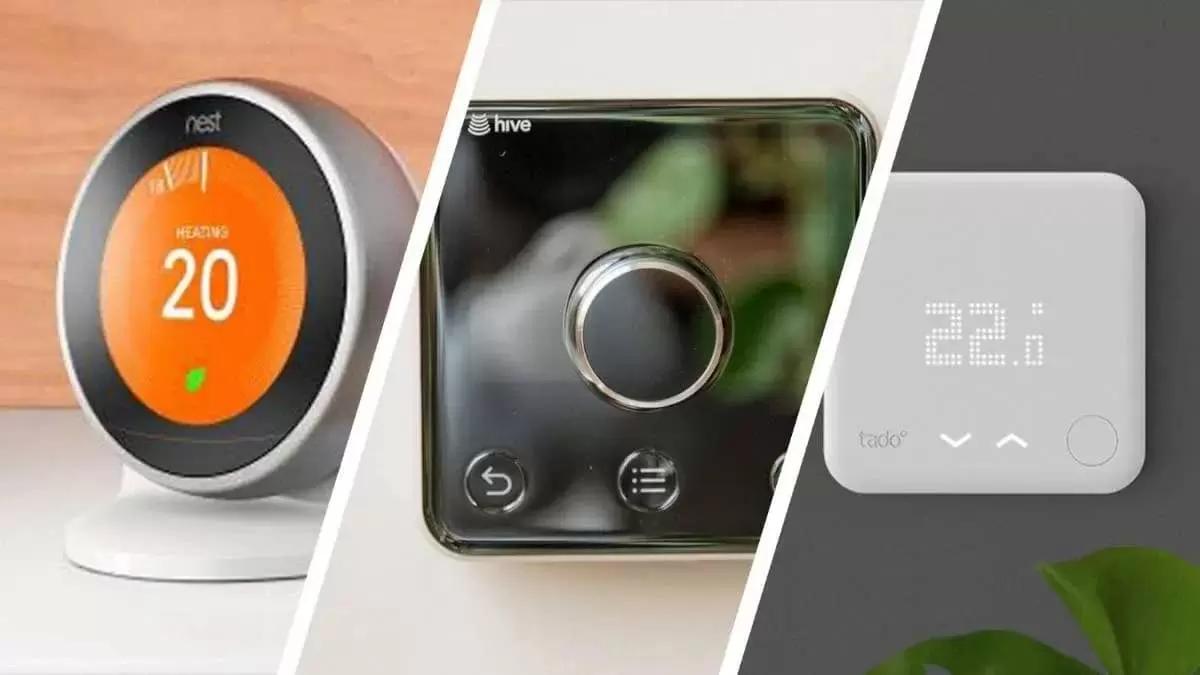
Why Smart Thermostats Are Worth It
If you’re looking for a way to save money and energy in your home, it may be a wise investment to explore getting a smart thermostat. These gadgets can do everything from track when you leave the house, so that it doesn’t throw away electricity heating or cooling an empty home, to changing energy usage based on how many people are in a room or what time of day it is.
We’ll cover what a smart thermostat is, how it runs and why it’s worth it to purchase one. We’ll also discuss how it can help you save money on your energy bills by lowering energy consumption.
What Is a Smart Thermostat?
A smart thermostat is an automated device that allows you to do everything from adjusting your heating and cooling settings for different times of day, to tracking when people are in the house, so it isn’t needlessly consuming energy by heating or cooling a vacant home.
Many smart thermostats have learning capabilities, which means they pay attention to how you adjust your settings and make automatic adjustments as time passes based on what they learn from you.
A smart thermostat connects to Wi-Fi, so you’ll be able to adjust and keep track of your energy usage from just about anywhere.
How Do Smart Thermostats Work?
A smart thermostat has learning algorithms and can hook up with other smart home technology, such as Google Home, Amazon Alexa and Apple HomeKit, for even better control over your comfort. They’re compatible with most systems, such as home heating and air conditioning.
Smart thermostat features consist of a temperature sensor that can tell when the home is empty, and then automatically change to an energy-efficient setting. Your smart thermostat may be able to geofence with your phone to know when you’re at home or away.
A smart thermostat does tasks like adjust more for rooms that are full or have more people in them, as well as monitor what time of day it is so it knows how much heating or air conditioning should be used.
Are Smart Thermostats Worth It?
For some people, the answer is yes. If you do a lot of traveling or are out for many hours during the day, it may be worth your money to invest in one of these devices. You could save a lot, especially if you forget to adjust it when you leave for work or go out of town for the weekend.
You won’t have to worry about whether your smart thermostat is on the right program, or if you remembered to change the temperature setting before you went out. It doesn’t require much effort from you, but you’ll see it in lower energy bills.
Smart Thermostats vs. Programmable Thermostats
Many homeowners have a standard programmable thermostat, but 40% of them aren’t set correctly. This means you could be missing opportunities to save on heating and cooling costs.
Smart thermostats are convenient because they adjust to your schedule and automate heating and cooling that corresponds. You can set a comparable schedule on a programmable thermostat. But it’s more work to program your thermostat by hand.
A smart thermostat conveniently adjusts and gradually changes the temperature inside your home for the biggest energy savings. If you manually adjust a programmable thermostat, you can overburden your HVAC system and make it work harder to meet your changes.
Do Smart Thermostats Save Energy?
Yes, since your smart thermostat will learn from your temperature preferences and day-to-day activities to make a schedule that reduces heating and cooling costs. You don’t have to do much as your thermostat does all the work for you while conserving money.
You can acquire identical energy savings with a programmable thermostat, but it’s going to require a little bit more effort than a smart thermostat. To set up a schedule on programmable models, we suggest following these guidelines from ENERGY STAR® to save energy.
Recommended Temperature Settings for Your Heating System
- Wake: Under 70 degrees.
- Day: Set back at least 8 degrees, if no one is home.
- Evening: Higher than 70 degrees.
- Sleep: Decrease at least 8 degrees.
Suggested Temperature Settings for Your Cooling System
- Wake: Higher than 78 degrees.
- Day: Set up at least 7 degrees, if no one is home.
- Evening: Lower than 78 degrees.
- Sleep: Set up at least 4 degrees.
To sum up, you don’t have to get a smart thermostat to save on your energy bill. All you need is a programmable thermostat, but it’s essential to know that any savings may come at the expense of your comfort and convenience.
Do Smart Thermostats Save Money?
Nest, one of the most popular smart thermostat manufacturers, states its smart thermostat saves U.S. homeowners about:
- 10-12% on your heating bill
- 15% on your cooling bill
- $131 to $145 on your energy bill each year
Your smart thermostat will provide you with a monthly heating and cooling report, which usually compares you to other residences in your community.
Your potential savings vary based on your home, where you live, how much insulation you have and your preferred temperature settings. You might experience average savings, significant savings or somewhere in between.
If you’re noticing you’re only getting minimal savings on energy costs, you might be optimizing for energy efficiency currently. This includes switching off your HVAC system when you’re not at home or moving your thermostat up/down when you’re sleeping.
Smart thermostats make this simple through their hands-off process that gradually shifts the temperature. If you’re at home a lot, it might not save you much on energy costs as is the point in an automatic, energy-efficient schedule.







